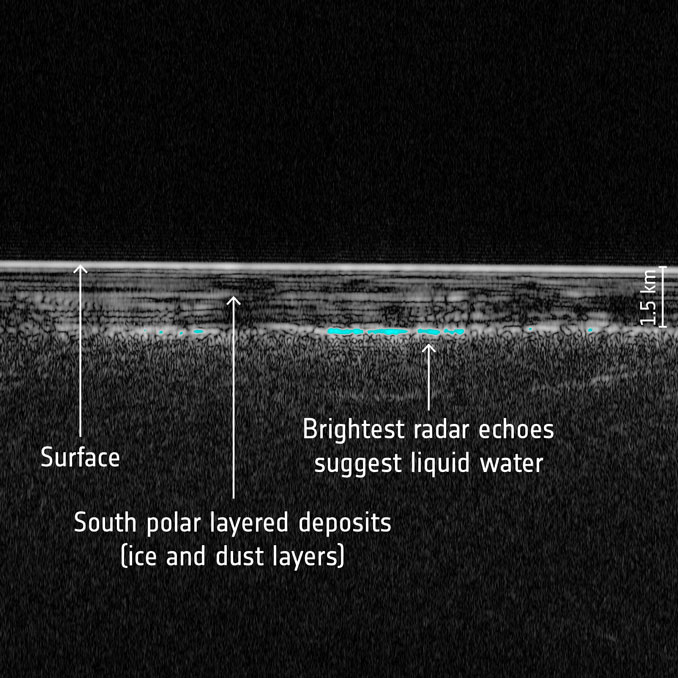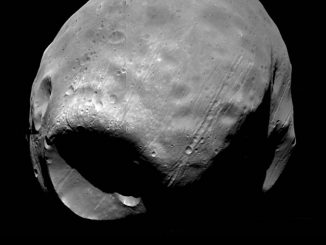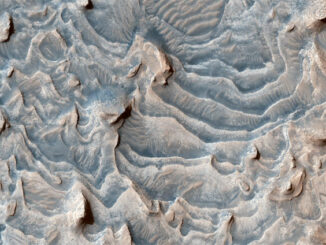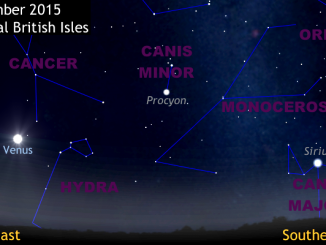
A ground-penetrating radar aboard the European Space Agency’s Mars Express satellite has found evidence for a pool of liquid water, a potentially habitable environment, buried under layers of ice and dust at the red planet’s south pole.
“This subsurface anomaly on Mars has radar properties matching water or water-rich sediments,” said Roberto Orosei, principal investigator of the Mars Advanced Radar for Subsurface and Ionosphere Sounding instrument, or MARSIS, lead author of a paper in the journal Science describing the discovery.
The conclusion is based on observations of a relatively small area of Mars, but “it is an exciting prospect to think there could be more of these underground pockets of water elsewhere, yet to be discovered,” added Orosei.
Scientists have long theorised the presence of subsurface pools under the martian poles where the melting point of water could be decreased due to the weight of overlying layers of ice. The presence of salts in the Martian soil also would act to reduce the melting point and, perhaps, keep water liquid even at sub-freezing temperatures.
Earlier observations by MARSIS were inconclusive, but researchers developed new techniques to improve resolution and accuracy.

“We’d seen hints of interesting subsurface features for years but we couldn’t reproduce the result from orbit to orbit, because the sampling rates and resolution of our data was previously too low,” said Andrea Cicchetti, MARSIS operations manager.
“We had to come up with a new operating mode to bypass some onboard processing and trigger a higher sampling rate and thus improve the resolution of the footprint of our dataset. Now we see things that simply were not possible before.”
MARSIS works by firing penetrating radar beams at the surface of Mars and then measuring the strength of the signals as they are reflected back to the spacecraft.
The data indicating water came from a 200-kilometre-wide (124-mile-wide) area that shows the south polar region features multiple layers of ice and dust down to a depth of about 1.5 kilometres (0.9 miles). A particularly bright reflection below the layered deposits can be seen in a zone measuring about 20 kilometres (12 miles) across.
Orosei’s team interprets the bright reflection as the interface between overlying ice and a pool or pond of liquid water. The pool must be at least several centimetres thick for the MARSIS instrument to detect it.
“The long duration of Mars Express, and the exhausting effort made by the radar team to overcome many analytical challenges, enabled this much-awaited result, demonstrating that the mission and its payload still have a great science potential,” says Dmitri Titov, ESA’s Mars Express project scientist.
The discovery is significant because it raises the possibility, at least, of potentially habitable sub-surface environments.
“Some forms of microbial life are known to thrive in Earth’s subglacial environments, but could underground pockets of salty, sediment-rich liquid water on Mars also provide a suitable habitat, either now or in the past?” ESA asked in a statement. “Whether life has ever existed on Mars remains an open question.”



